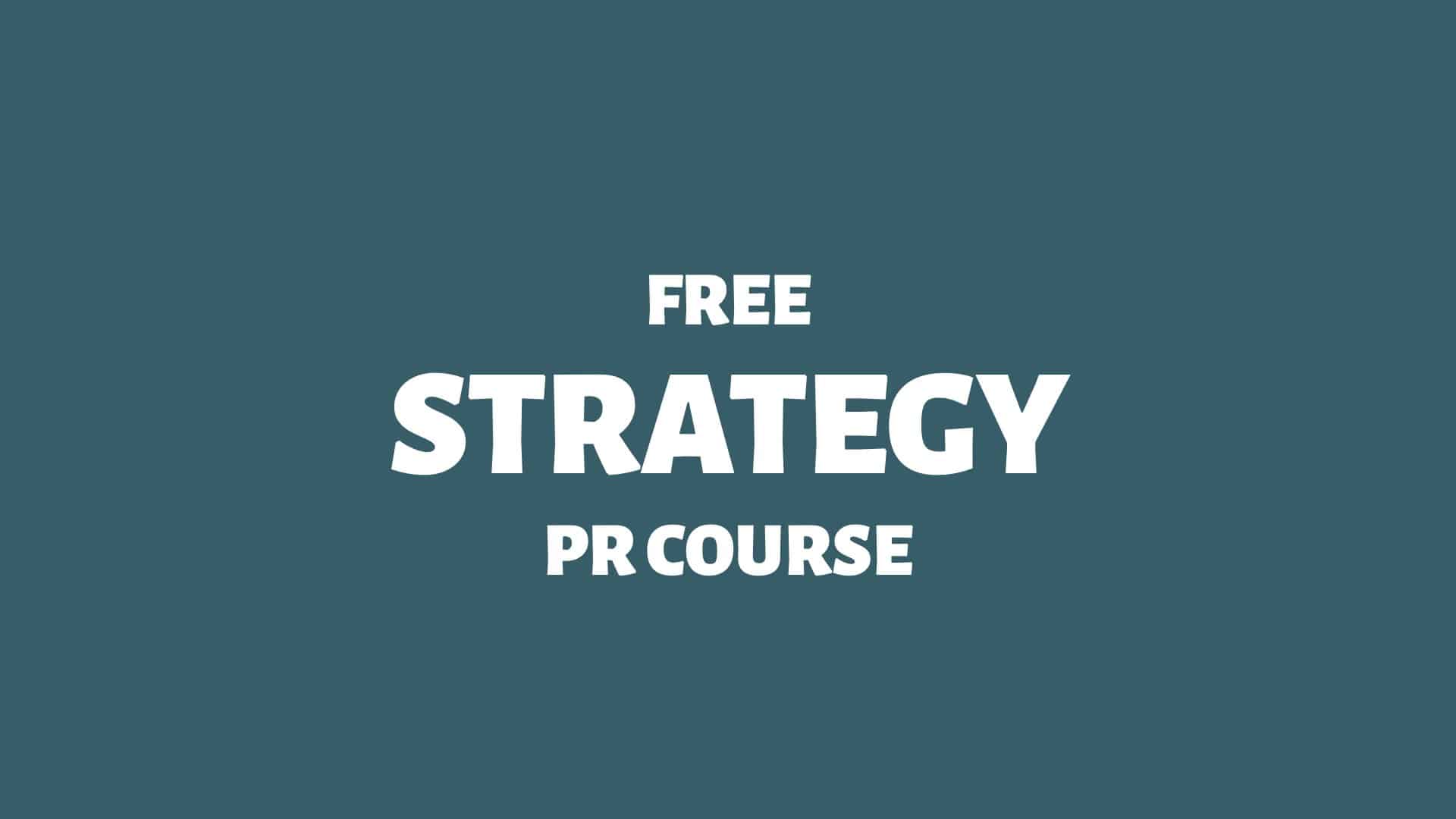How to create a PR strategy that actually works?
When putting together a PR strategy, it’s easy to get overwhelmed.
In an attempt to cover all possible bases, you might risk adding too many bells and whistles — while failing to add the essential parts.
The good news: You just need to get the basics right.
And this blog post can help you.
Here we go:
What Is a PR Strategy and Why Do You Need One?
A PR strategy is a guiding principle that helps your organisation establish and maintain relations with stakeholders, influencers, and publics.
In concrete terms, a PR strategy (also commonly referred to as a communications strategy) is a document or presentation outlining how your organisation is supposed to win three crucial PR assets in today’s competitive landscape:
Attention, trust, and loyalty are the building blocks of those relationships the organisation needs to sustain itself.
An organisation, starved of attention, trust, and loyalty, is compelled to wage a perpetual struggle for its continued existence.
The Cost of a Poor PR Strategy
A poor PR strategy will cost you:
Everything you do or say as an organisation will add or subtract from those willing to listen, read, or view.
Everything you don’t do or say as an organisation will add or subtract from those willing to listen, read, or view.
In short:
Everything communicates.
Whether or not your organisation is actively working with PR, every interaction and non-interaction will add to (or detract from) your brand’s attention‑, trust- and loyalty capital.
Some PR professionals subscribe to the idea that PR activities can be translated into ROI. I think it’s an admirable ambition, but when push comes to shove, the actual cost of having poor public relations is dwindling chances of survival:
Not even the greatest empires can last forever with a poor PR strategy. Over time, deteriorating relationships with stakeholders, influencers, and publics will pile up and bring even the mightiest of powers down.
The Most Common PR Strategy Mistake
A PR strategy is basically “a document or presentation.”
As such, it mustn’t be short. You can add bells and whistles to your PR strategy; perhaps you wish to include a long section describing research on your stakeholders, influencers, and publics. Perhaps you wish to include a long section describing each prioritised media channel.
That’s fine. But a word to the wise:
Poor PR strategies typically lack substance and clarity. Few notice this absence because all those “bells and whistles” seem impressive and well-documented.
Bells and whistles can be valuable in their own right. But always make sure you get the basic PR strategy down first:
The Magical PR Question
Your PR strategy should answer one simple question:
The magical PR question: Do we know how to win and defeat our competitors?
If your PR strategy fails to answer this question in the affirmative, it also fails to provide a roadmap to success. Winning is a culture and a structural asset.
“Competitiveness is derived from permanent infrastructural characteristics of organizational design, rather than just relying on temporary strategic assets.”
Source: Strategic Change 1Connor, T. (2007). A consideration of strategic assets and the organizational sources of competitiveness. Strategic Change, 16, 127 – 136. https://doi.org/10.1002/JSC.789

Is winning that important?
Yes, in competitive environments and changing societies, winning is sometimes the only way to keep up.
The Red Queen effect (mental model). This metaphor originates from Lewis Carroll’s Through the Looking-Glass. It describes a situation in which one must continuously adapt, evolve, and work to maintain one’s position. In the story, the Red Queen is a character who explains to Alice that in their world, running as fast as one can is necessary just to stay in the same place. The metaphor is often used in the context of businesses that need to innovate constantly to stay competitive, highlighting the relentless pressure to adapt in dynamic environments where stagnation can mean falling behind. 2Red Queen hypothesis. (2023, November 27). In Wikipedia. https://en.wikipedia.org/wiki/Red_Queen_hypothesis 3Carroll, L. (2006). Through the looking-glass, and what Alice found there (R. D. Martin, Ed.). Penguin Classics. (Original work published 1871.)
Learn more: The Magical PR Question
How To Create a PR Strategy That Takes the Cake
A successful PR strategy should have three essential components: analysis, guiding principle, and coherent actions:
The 1‑Page PR Strategy
My inspiration for writing “no-bullshit” strategies comes from the classic “Good Strategy, Bad Strategy: The Difference and Why It Matters” by Richard Rumelt. 4Rumelt, R. P. (2011). Good Strategy, Bad Strategy: The Difference and Why It Matters. Crown Business.
“The most basic idea of strategy is the application of strength against weakness. Or, if you prefer, strength applied to the most promising opportunity.”
Source: Good Strategy, Bad Strategy: The Difference and Why It Matters 5Rumelt, R. P. (2011). Good Strategy, Bad Strategy: The Difference and Why It Matters. Crown Business.
By applying strength against weakness, the 1‑page PR strategy focuses on how to win.
The magical PR question: Do we know how to win and defeat our competitors?
It’s asymmetric warfare.
Asymmetric warfare (mental model). This refers to conflict between parties of unequal strength, where the weaker party uses unconventional tactics to exploit the vulnerabilities of the stronger opponent. It’s often discussed in military and business contexts.
How To Write a 1‑Page PR Strategy
Here’s how you can write a 1‑page PR strategy that fits one page — using the mythical battle between David and Goliath as an analogy:
1. Diagnosis
2. Guiding Policy
3. Coherent Actions
If you write 1 – 2 clear sentences per bullet, your strategy should fit nicely on one page.
Learn more: The 1‑Page PR Strategy
Tips for Developing and Implementing an Effective PR Strategy
A helpful approach to formulate a robust PR strategy is to identify a stupid majority and a smart minority:
The Stupid Majority PR Strategy
From what the conversion theory teaches us, minorities tend to hold their opinions more firmly. This is reasonable since going against the majority comes at a higher social cost. 6Silfwer, J. (2017, June 13). Conversion Theory — Disproportionate Minority Influence. Doctor Spin | The PR Blog. https://doctorspin.net/conversion-theory/
But some minorities have an additional advantage:
Smart minority = a minority of today that will grow into a new majority of tomorrow.
In contrast, some majorities have an additional disadvantage:
Stupid majority = a majority of today that will steadily decline into a minority of tomorrow.
Identifying a stupid majority (and siding with a smart minority) will clarify your core message and attract highly engaged minority supporters.
Examples of Stupid Majorities
Stupid majorities are to be found everywhere:
Now, here’s the 1,000,000 EUR question:
What’s a stupid majority in your industry?
Challenging a Stupid Majority
Stupid majorities exist in your industry, too.
And now that you know what to look for, you’ll soon start finding them everywhere.
The stupid majority PR strategy could result in the most profound results of your public relations career:
Read also: The Stupid Majority PR Strategy
How to Evaluate and Adjust Your PR Strategy Over Time
It takes time for a new PR strategy to propagate through your ecosystem of stakeholders, influencers, and publics.
Despite the instantaneity of modern information technologies, cultivating human relationships remains firmly anchored in the unhurried passage of time.
Relationships are built on loyalty, loyalty is built on trust, and trust is built on attention. It takes time.
Therefore, you shouldn’t strive to change your PR strategy for the sake of change itself. Only change your PR strategy if you’re sure it isn’t working.
How do you know the difference?
Apart from the apparent lack of good results, I find it helpful to map out several competitors and summarise their PR efforts as 1‑page strategies. This exercise often demonstrates who wins and loses the war for attention, trust, and loyalty — right now.

THANKS FOR READING.
Need PR help? Hire me here.

PR Resource: More PR Strategies
Spin Academy | Online PR Courses

Spin’s PR School: Free Strategy PR Course
Unlock the power of strategic public relations with this free Strategy PR Course. Elevate your skills and boost your career today.
Public Relations Strategy 101
Public Relations Strategies
Grey-Hat PR Strategies
Learn more: All Free PR Courses
💡 Subscribe and get a free ebook on how to get better PR.

Annotations
| 1 | Connor, T. (2007). A consideration of strategic assets and the organizational sources of competitiveness. Strategic Change, 16, 127 – 136. https://doi.org/10.1002/JSC.789 |
|---|---|
| 2 | Red Queen hypothesis. (2023, November 27). In Wikipedia. https://en.wikipedia.org/wiki/Red_Queen_hypothesis |
| 3 | Carroll, L. (2006). Through the looking-glass, and what Alice found there (R. D. Martin, Ed.). Penguin Classics. (Original work published 1871.) |
| 4, 5 | Rumelt, R. P. (2011). Good Strategy, Bad Strategy: The Difference and Why It Matters. Crown Business. |
| 6 | Silfwer, J. (2017, June 13). Conversion Theory — Disproportionate Minority Influence. Doctor Spin | The PR Blog. https://doctorspin.net/conversion-theory/ |


